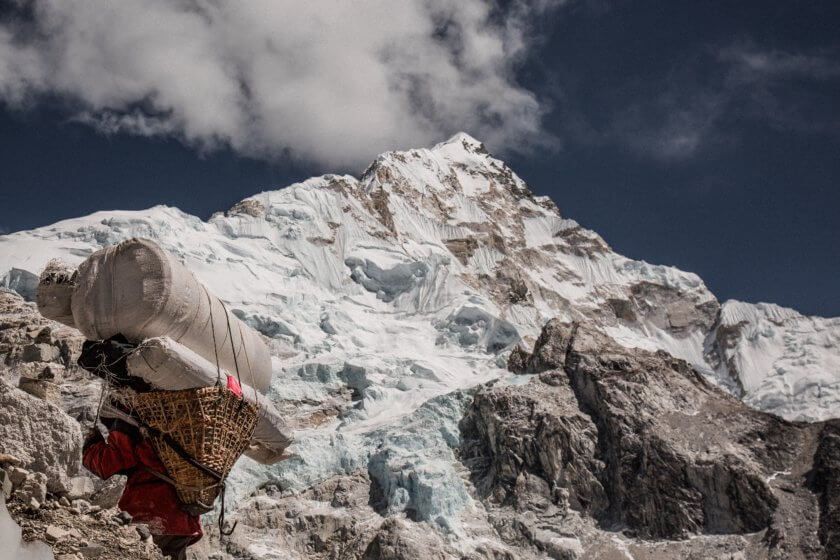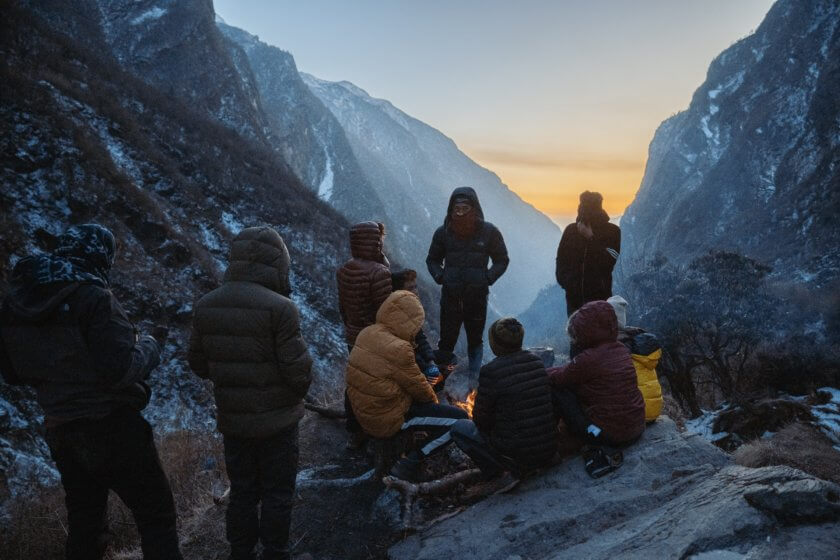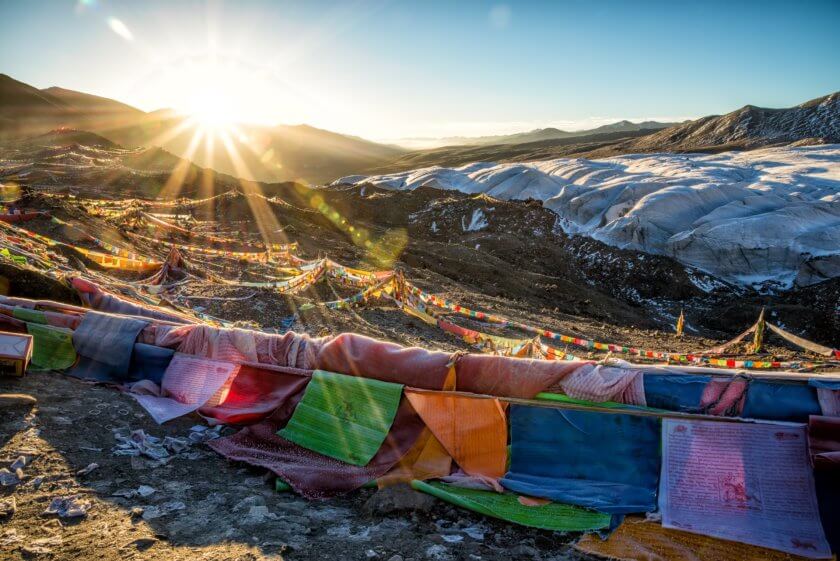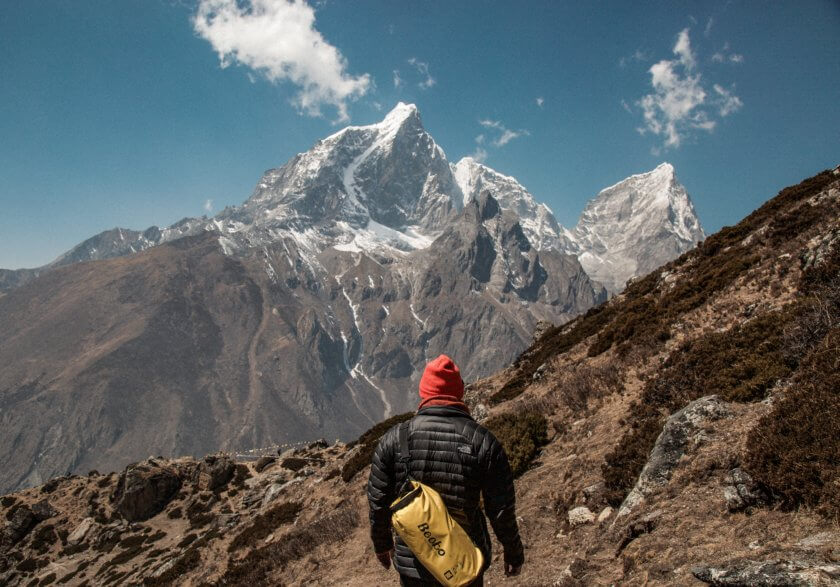
Let’s talk poo. We all produce it. We’ve all got to go when we’ve got to go. Though I doubt many of us want to think too deeply about it. But I’m sorry, just this time we really need to.
Hear me out for two minutes.
On average, us humans produce roughly a pound of poo a day (which, if you really want to know is about 28,800lbs in a lifetime based on living until you’re 80). But what happens when you get the urge to go on top of the world’s highest mountain, 5.5 miles into the sky?
Well, normally you’d simply pull down your multiple thermals and freeze your cheeks to take a crap out in the open. Maybe even cover it up with a rock or some snow if you’re feeling kind to your fellow hikers. Now, just multiply that image by the hundreds of people scaling Everest (on both the Nepalese and Tibetan side) and for the whole two month hike duration. Yep, there’s a stinking big issue right here.
Why Do People Leave Their Waste?
Mt. Everest is a life-endangering challenge to climb. The high altitude (and consequential lack of oxygen), harsh terrain and unpredictably ferocious weather unfortunately causes the death of mountaineers every year. The most gruesome part is that due to the difficulty of retrieving their bodies, many of the 297 deceased climbers still lie strewn where they fell along the route.
Since humans first began scaling Everest, they have been leaving not only their faeces but their general litter behind too. The added weight, space it takes in a backpack and general inconvenience to climb with it has meant it’s been a pretty socially acceptable thing to do. Though just as the perilous conditions have prevented the removal of the dead, they also hinder the removal of this waste.
In 2017 alone, a small group of climbers on the Nepalese side managed to collect a mammoth 25 tonnes of rubbish and an additional 15 tonnes of faeces. Lets pause here just a second to let that sink in – 15 TONNES from only one clean up operation. Holy crap (pardon the pun), that is a LOT of poop.
Trash and waste disposal on Mount Everest is a huge problem that is, of course, an extremely complex issue to tackle.

What’s the New Plan?
This year marks the first proper move by officials to address Everest’s growing waste dilemma. The director of the Chinese Mountaineering Association announced that on the Tibetan side, climbers must now carry all their litter with them, including their own excrement.
This is not the only change implemented to reduce the over-tourism impact on Everest either. The Tibetan side is now closed indefinitely to tourists who do not already have a permit, allowing a team of 200 to clean up as best they can. A more on-going move has been to drastically cut down the number of permits offered to climbers.
*Ahem*, your move now Nepal…

What is Wrong With Leaving Your Poo?
Poo on Everest, for various reasons including the freezing conditions, doesn’t biodegrade properly. The result? A delightful and growing turd minefield greeting walkers almost every step they take (especially, and most disgustingly, at camp spots where they need to pitch their tents). Not only this, the faeces near the base camp that does manage to thaw out, has started to contaminate nearby water sources triggering a wider environmental issue. Gross.
Hikers, the moment they step out onto a trail or track, carry the burden of responsibility to look after the environment they are enjoying. No matter where in the world they are or however difficult or risky the walk may be, all of us have a moral obligation to ‘leave no trace’. Quite frankly, there are no exceptions. Even for the world’s highest mountain (and even for one of nature’s most basic instincts).
When you decide to scale Mt. Everest, you essentially sign an invisible contract accepting this, and all the challenges that hiking it may involve. After all, you plan your meals, your emergency procedures, your breathing apparatus and mountaineering gear down to every fine detail; why would you neglect waste disposal preparation? I find it perplexing that hikers who set out to scale one of the worlds most incredible natural wonders are the same people OK with trashing it.
The reason that this has been happening is likely because people have been allowed to get away with it. Or, you could say governments and tourism organisations have turned a blind eye to it. Now, finally, (though a little bit late) regulations may just put a stop to it. Well, at least new trash on one half of Everest anyway.

Why Are These Changes on the Tibetan Side A Good Move?
By implementing rules that hikers must carry their own waste, it will firstly mean people will actually prepare for it. Whether it be sealable plastic bags or more complex storage or biodegradable systems, climbers will now be aware that they need to factor waste disposal into their plan. Essentially, climbers are now fully accountable and it cuts out the ‘I didn’t know’ excuse card. It’s now in black and white folks.
The power of influence should also not be overlooked here. Hopefully, these actions will trigger the Nepalese side to implement some much needed changes, especially considering their part sees the majority of visitors (80% of total Everest tourists to be precise).
Although no doubt some waste will still be left behind, the Tibetan side should see a visible reduction in litter. This in turn means fewer cleaning operations will be needed, which of course means fewer lives are endangered altogether.
It’s one small step for providing a clean and hygienic environment for Sherpas, assistance crew and hikers, but one giant leap for the wider ecological environment. Nice job Tibet!
What are your thoughts on this issue?





























